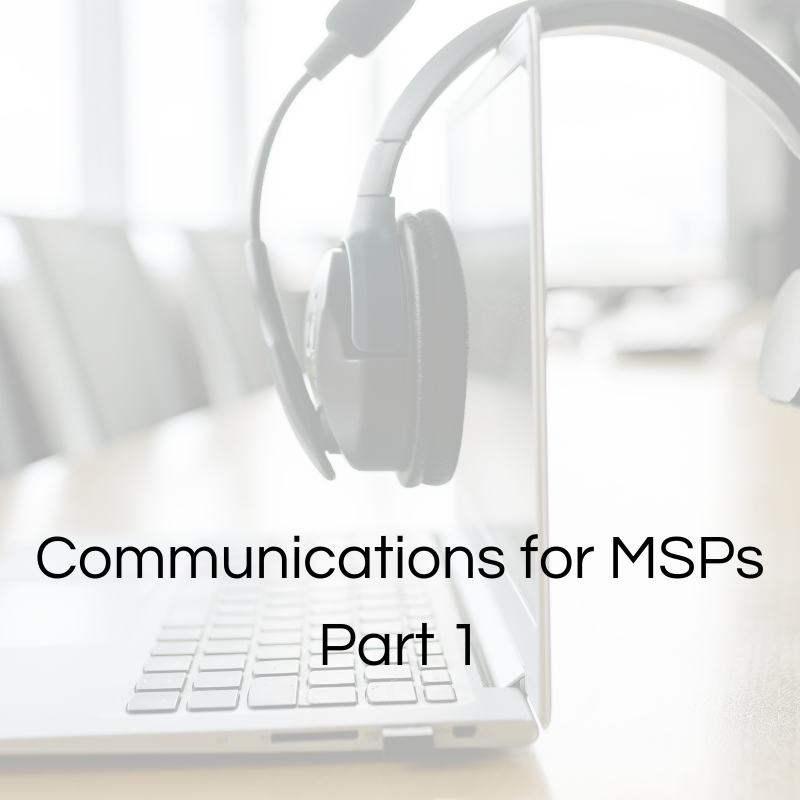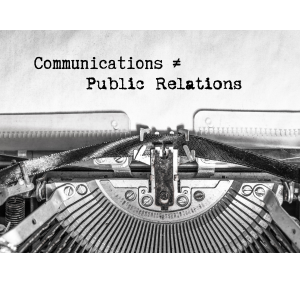In this 3-part series on Communications for MSPs, I’ll share how MSPs should operationalize Communications, starting with how and when to hire communications professionals, followed by discussing the focus areas, strategies and KPIs for MSP Comms teams and finishing up with Communications best practices for the MSP market.
Part 1: When and How to Build a MSP Communications Team

I’ve spent a decent part of my career working with or for Managed Service Providers (MSPs). It’s an interesting market with a lot of variety, mixing B2B tech with SMB. If you’re an MSP owner/CEO you’re probably doing a lot and if you’re not in the service delivery side of the business, you likely need to be functionally proficient in multiple areas as the company grows.
Communications for MSPs is important, but it needs to operate a bit differently than it would in other B2B SaaS environments because it’s not just about a product – it’s about a service – and understanding both the people dynamics and the B2B2C motion and relationships is critical.
When should an MSP add Communications to the team and where should they sit?
Obviously, I’m a proponent of having a dedicated strategic Communications function out of the gate for any business, but this isn’t always practical. Let’s think about this like a path from external support to first FTE, to building out a team – based on employee base size or revenue milestones as general benchmarks.
*Note: every organization is different and has different growth objectives, market characteristics, and ARR to FTE ratios, etc., so use this as a general guide, not gospel.
1-25 employees / under $10M ARR.
At this stage, it’s good to have a senior Comms expert providing counsel to company leadership and to start building good foundations for Internal Comms, Customers Comms, and Reputation Comms (aka Public Relations). They can also advise and support part-time contractors, as well as in-house Customer, Marketing, and HR teams. A advisor who can provide 5 or so hours a week to build core strategy and brand story, help leaders ask the right questions, and ensure the communications is built into how teams execute will set up the organization for efficiency and success as it scales.
25-50 employees / $11-$25M ARR.
This is the time for a more committed consultant/fractional leader (10-20 hours/week) who can provide strategy and execution support. The person would work beyond the leadership team, collaborating with mid-level teams, particularly in HR, Marketing and Service Delivery / Customer Experience.
Depending on the company’s growth projections and GTM motions, this may also be a good time for boutique Public Relations firm to support the brand messaging/positioning and start a more consistent drum beat of content, social and media relations activities, if the marketing team is focused on paid/performance initiatives. A fractional leader can help hire, onboard, and manage a firm on the company’s behalf.
The higher end of this scale merits an FTE who has around 5 years of comms experience. They need to be a person who can execute well, but will need senior-level guidance. At an MSP, they should sit in Operations or Post-sales to ensure their time is balanced between internal, customer, and reputation comms.
Note: this is where comms usually gets lumped into Marketing or HR, which – depending on the department leader – might not be horrible, but it will influence how work is prioritized. In MSPs, the customer relationship is critical, so I recommend putting comms in Ops/Post-Sales because if there are competing priorities, customer experience should win at this stage.
50-200 employees / $25M-$75M ARR
This stage merits a full-time SVP/VP level Communications leader reporting to the COO or a fractional Head of Communications/Chief Communications Officer available 20+ hours/week with 2-5 team members who can execute in a focused way for internal, customer and reputation comms areas.
At this stage, there is going to be a lot of communication tactics needed and requested from various parts of the company. Without a sound strategy and a leader who can create and maintain a vision with solid comms foundations, the function will lose its value and positive impact on the org. This is where risk can be introduced, as well as inefficiency, lower employee engagement and messy customer communications that will negatively impact retention. It’s also where brand messaging and positioning has a higher risk of dilution and confusion. A Comms leader can ensure the story remains impactful and consistent.
200-500+ employees / $75-$150M+ ARR
At this size or any larger, an MSP should have an in-house, full-time Chief Communications Officer reporting to the CEO with a team of at least 5, scaling up based on the size and complexity of the business around offerings, geographies, verticals, investment or growth goals, etc. The Comms team should also be supported by a PR agency and have a budget for additional contractor support based on strategic initiatives and targets.
Communications at this point should own Brand Story, Internal Comms, Customer Comms, and reputational areas like Public Relations, Social Media, Executive Thought Leadership/Visibility, and Crisis Comms. They should also be providing strategic input on messaging & positioning, content, sales enablement, employee experience, and customer experience.
This is also when the Comms team will likely have tools or work with tools owned by Marketing, HR, Customer Success, Sales and Service Delivery teams so ensuring there is Rev/Marketing Ops support to help with integration and analytics is important.
The larger or more complex an MSP grows, the more important Communications becomes and investment should be made both in headcount and in strategic attention for the function. As Communications has the potential to positively impact and improve nearly all aspects of an organization – large or small – it’s most important to have good foundations and view Communications as a collaborative and cross-functional department.
Stay tuned for part 2 where we’ll look at the strategies and KPIs a MSP’s Comms team should be focusing on and further dive into the areas of ownership for the function.





Leave a Reply